Technical Specifications as listed by EK:
“Material:
- Copper fins
- 90% copper tubing (H90)
- Brass chambers
- Aluminum/Steel housing
- 320 x 145 x 45mm (L x W x H)
- Weight: 1.12kg
- Liquid Capacity: ~290mL
- FPI: 16
- Port threads: 2x G1/4
- Fan compatibility: any standard size 140x140x25mm fan;
- UNC 6-32 thread tapping
- Pressure tested: 1bar(g)“
Dimensions Measured on the Radiator Tested:

Radiator Core Dimensions:

The 32 mm thick core is made up of a two layers of 15 x 1.2mm copper tubes which are arranged in a standard U-Flow configuration. The fin arrangement consists of single non-louvered serpentine fins with a 17 FPI count. The core package on paper at least, appears to be tuned for low to medium speed fans. We’ll have to wait until our performance tests to find out if this turns out to be the case..
The following picture is a reference which shows a typical U-Flow coolant flow path, where the coolant travels up all the tubes on one side (left in pic) of the rad and then returns down the other side. U-Flow is most easily recognized when the port end has 2 separate tanks, unlike the CE 280 which has the tank/s inside an aluminum housing.
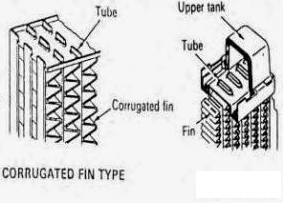 The CE 280 has a brass plate inside it’s port end tank and is covered by the external casing so is difficult to distinguish the U-Flow path without dis-assembling and closer inspection. The following picture is of the CE 420, but apart from the length the end tanks and core are the same.
The CE 280 has a brass plate inside it’s port end tank and is covered by the external casing so is difficult to distinguish the U-Flow path without dis-assembling and closer inspection. The following picture is of the CE 420, but apart from the length the end tanks and core are the same.

The louvered fins were spaced somewhat unevenly between the tubes on the review sample, and had a spread of 14 – 18 FPI.
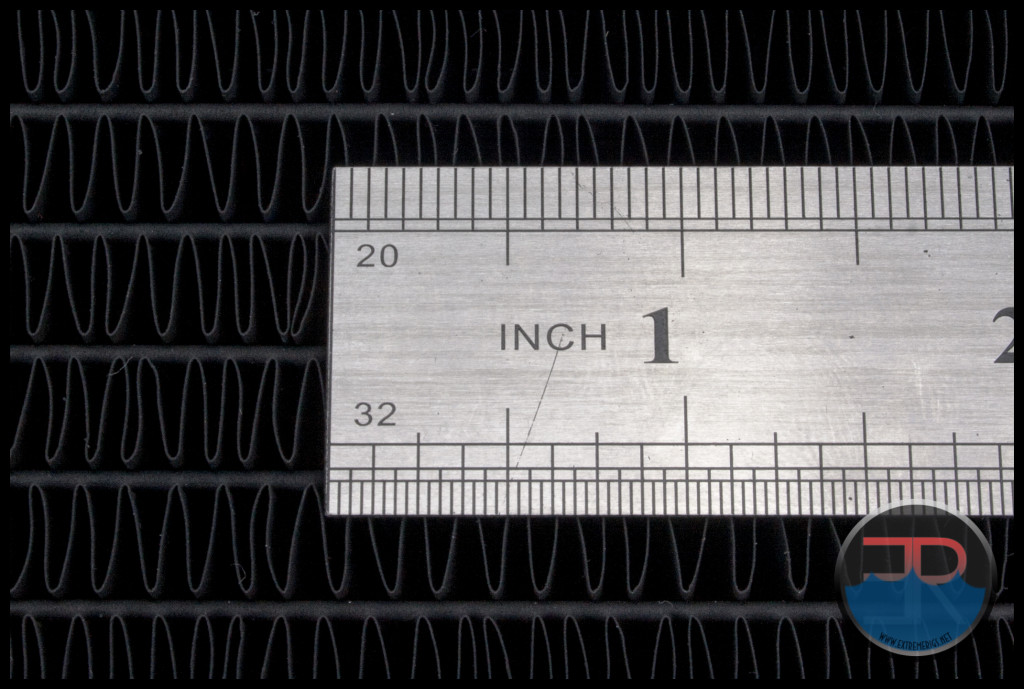
Finish and Features
The CE 140 has a satin black finish which looks great and is smooth to touch. Close inspection shows the finish is actually quite bumpy. The black is not quite black either, but more of a deep charcoal grey. In any case the finish looks great BUT does tend to scuff up rather easily.
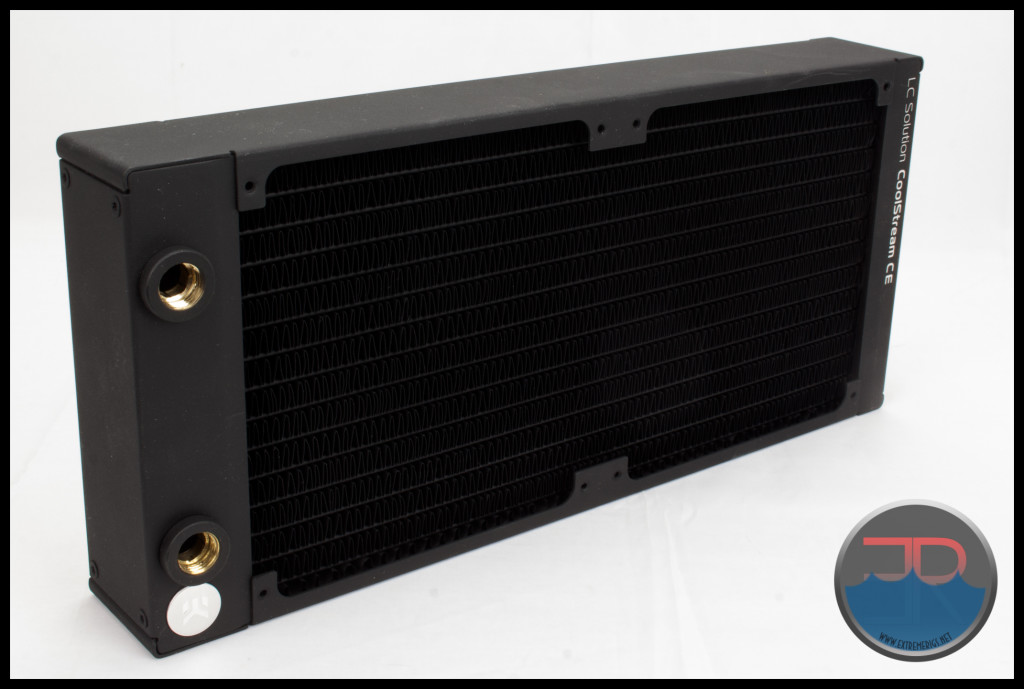
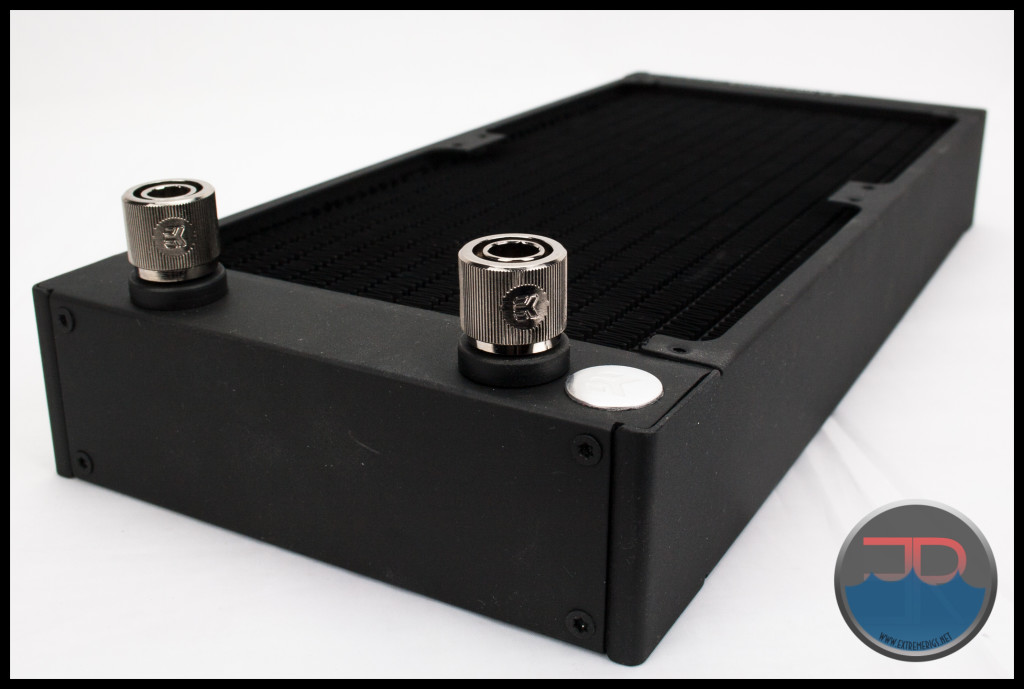
At the non-port end is the seemingly mandatory branding we find on almost all of our gear. At least it’s in an inconspicuous spot and tastefully done.
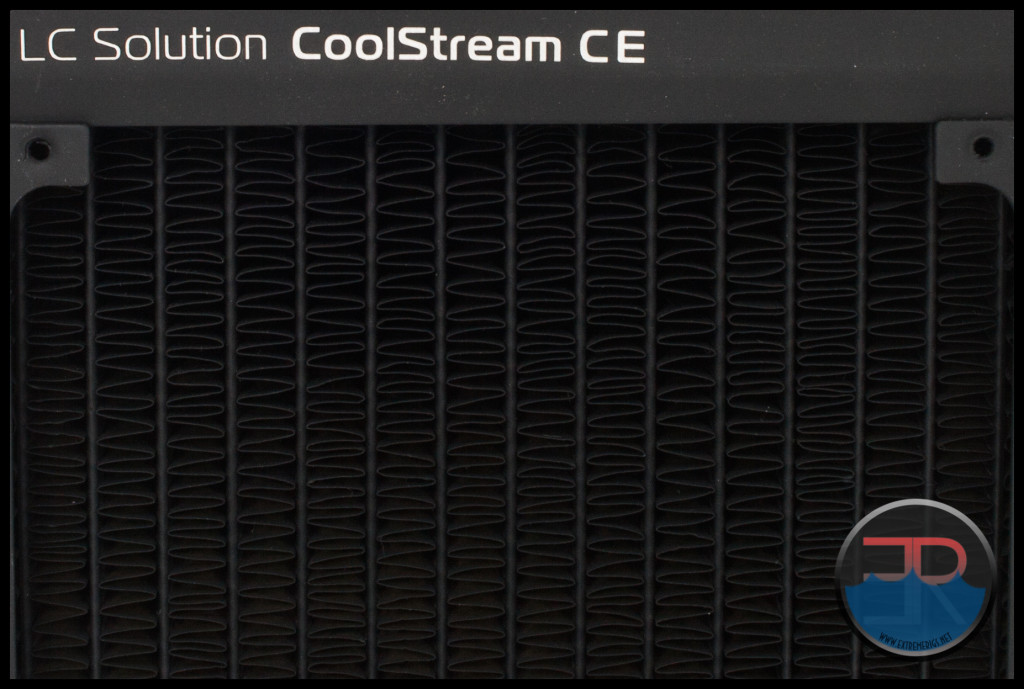
The center fan mount spacing is the standard 15mm.
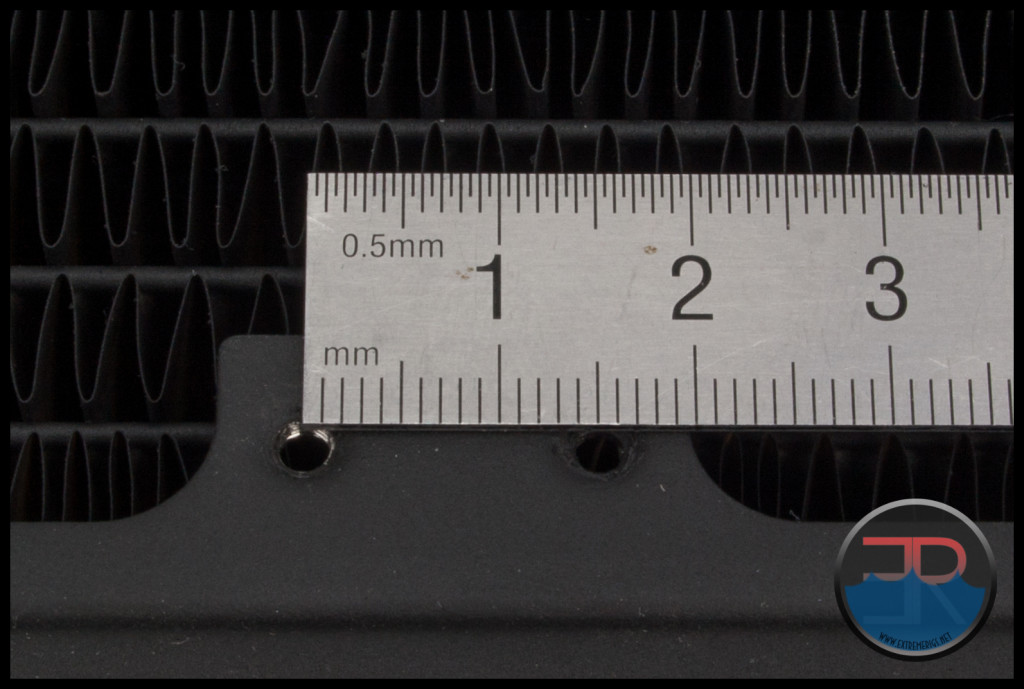
Screw protection plates are not fitted under the mounting holes on the CE 280.
Thankfully no tubes are located directly under the mouthing holes.
When using the supplied 30mm screws to attach a 25 thick fan there is ~2mm gap between the bottom of the screw and the radiator core. Perfect!
Below we see a 125mm fan hole spacing at one end of the CE 280. All distances, both across and length-ways were similar and we had no problems attaching all the fans.
The CE 280mm comes equipped with just 2 ports in total, 1 inlet and 1 outlet.
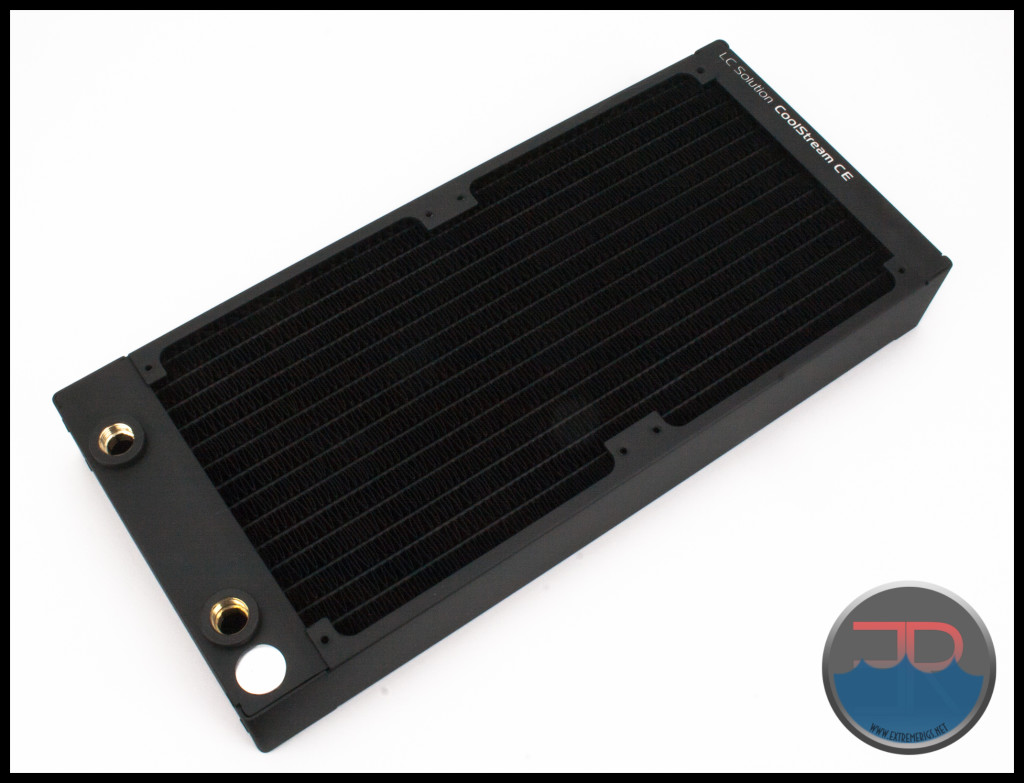
Technically these are port extenders which have the dual purpose of helping keep the core from moving around inside the casing as well as provided a sealed extension from the radiator withing the aluminum housing.
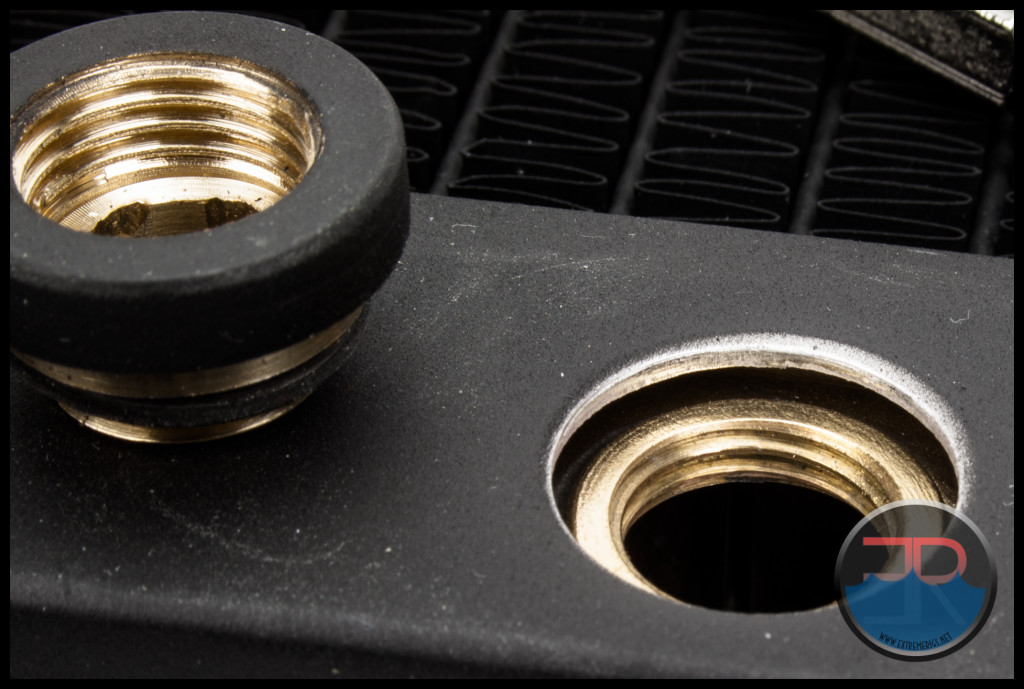
The extenders have a tendency to unscrew when removing fittings, and it is the 9mm allen key (missing from the review sample) which is used to tighten them back up.
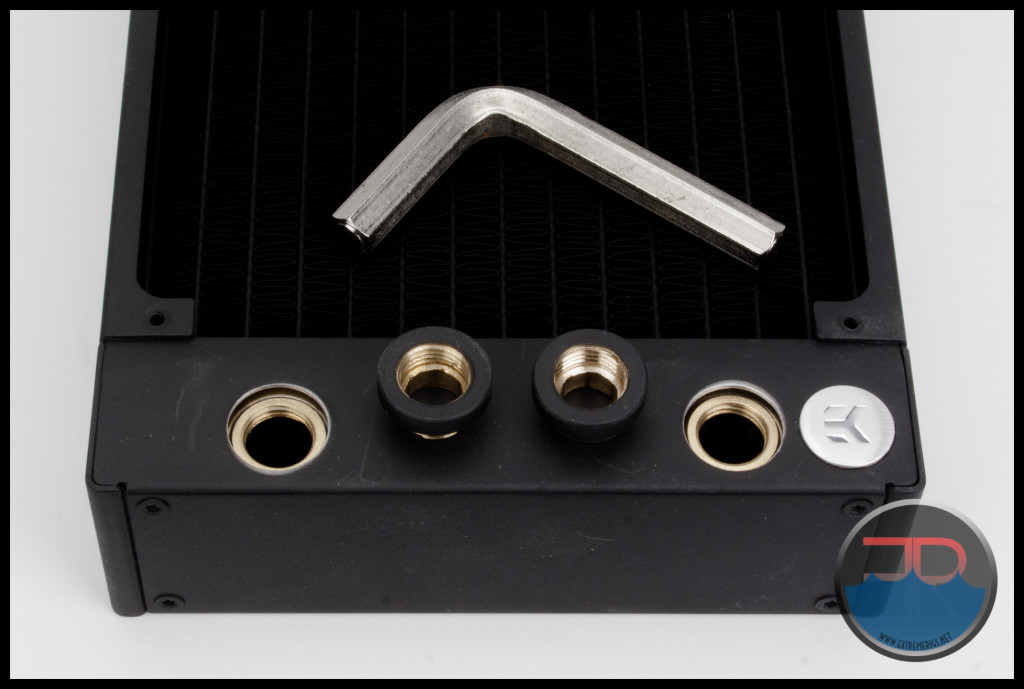
While the CE 280 is a 45mm thick radiator the port extenders sit ~5mm proud of the casing so at the port end it actually measures ~50mm thick.
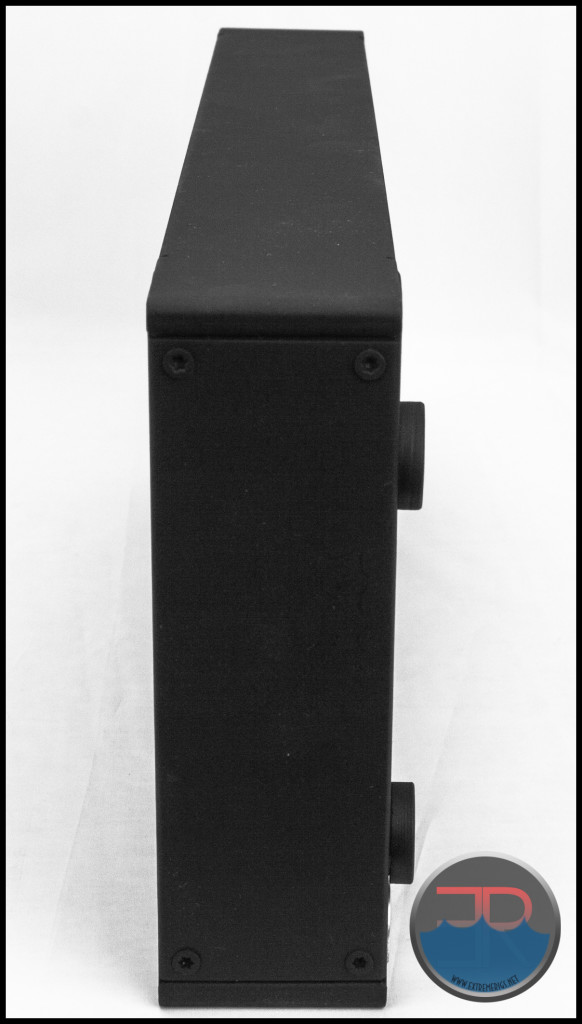
No alternate ports are fitted on the other side or the ends of the tank end.
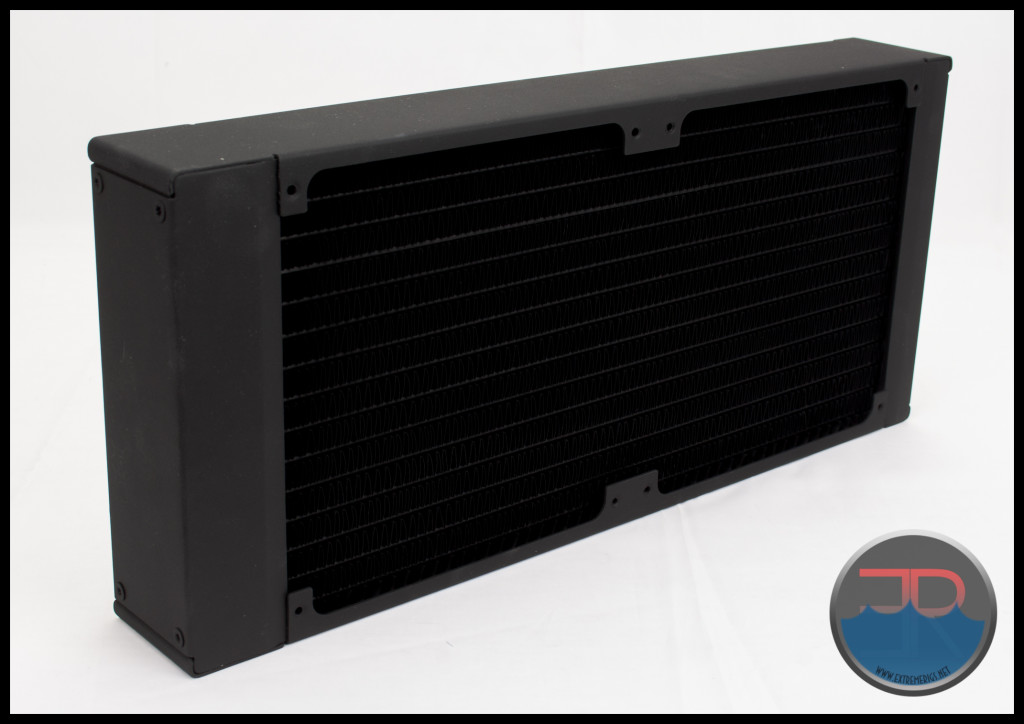 and no ancillary port on the return end.
and no ancillary port on the return end.
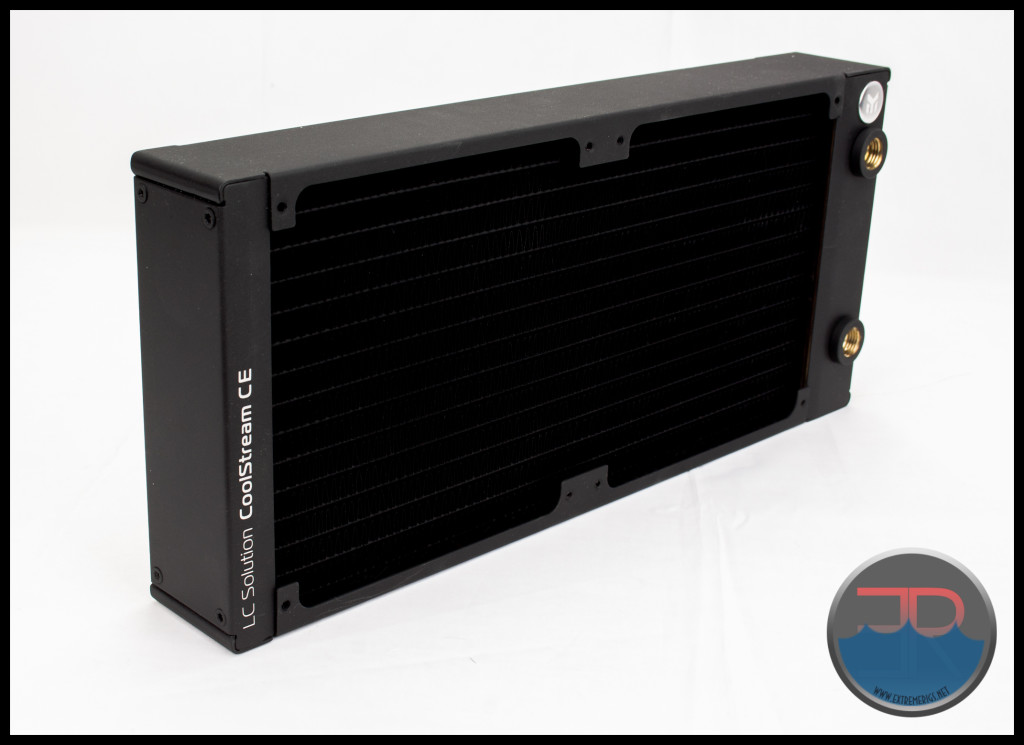
This leaves us with one very “traditional” option for installing the inlet and outlet fittings, with no option of a fill/bleed ports, or drain taps and temp sensors with additional fittings being used.
The G 1/4 ports are positioned far enough back from fan locations so that even the largest of fittings can be used. Here a Bitspower 1/2″ x 3/4″ compression comfortably fits without interference from the fan.
I’ve been mentioning many of the key points of what is perhaps the most recognizable physical feature of the CE 280 without actually mentioning it in any detail. I am of course talking about the enclosure which the radiator is actually housed in. It is a 4 piece enclosure comprised of two side panels and the 2 end pieces, all of which appear to be made from 0.6mm aluminum stock. When taken apart the panels do have some flex, but when assembled it has a very solid feel to it. The relative ease at which the CE 280 enclosure can be disassembled makes it an ideal candidate for custom paintwork of the enclosure panels.
I did have the CE 280 apart for a group shot of various EK radiator cores, but never took photos of the by CE280 itself for some reason. The following image is of the CE 420 which should give you an idea of what the CE280 looks like when broken down.

So here we have a 45mm thick radiator with a medium FPI count that has just 2 ports and no screw protection plates. The build quality is good and it has a stylish look but is lacking a few features.
Let’s see how it performs…







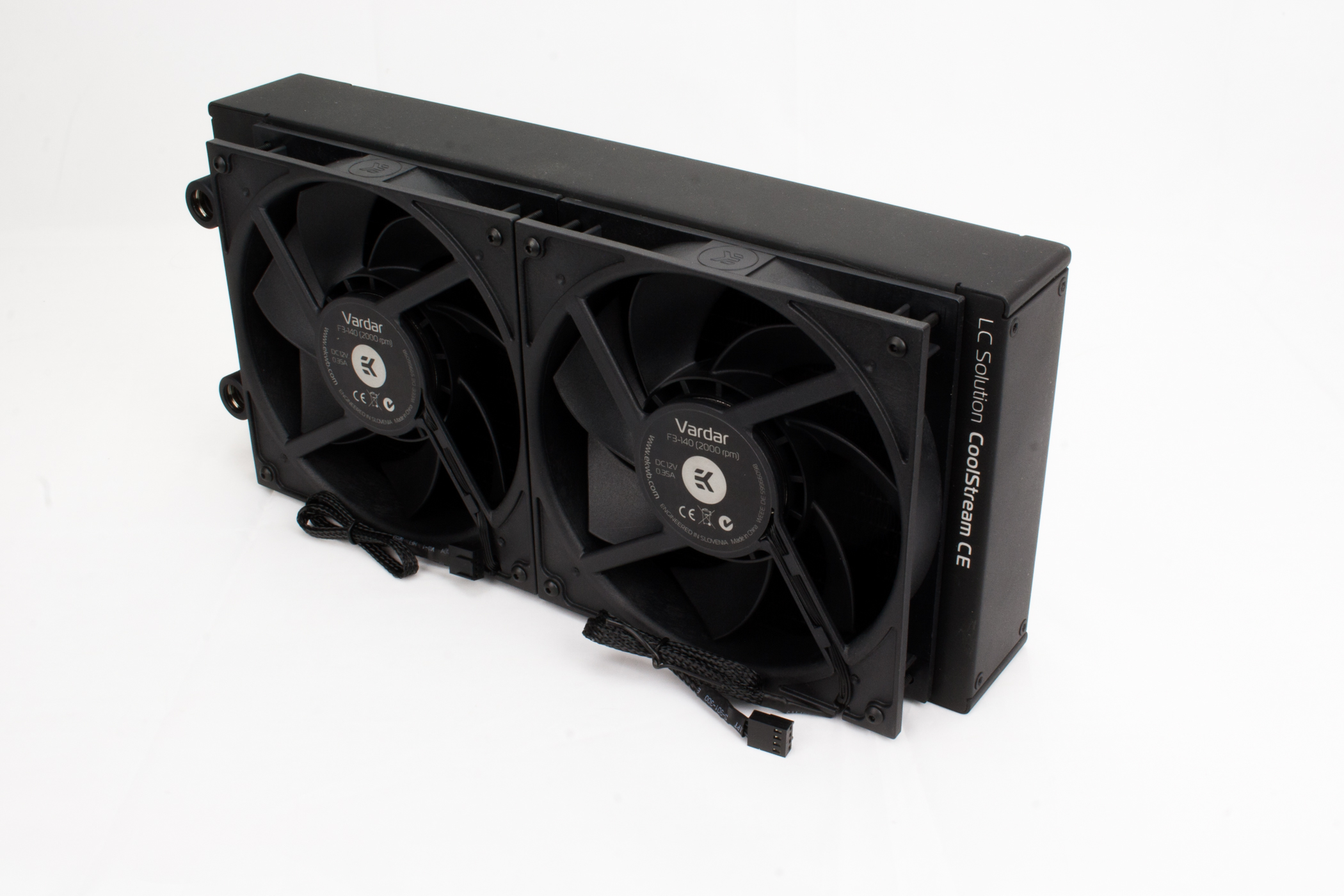
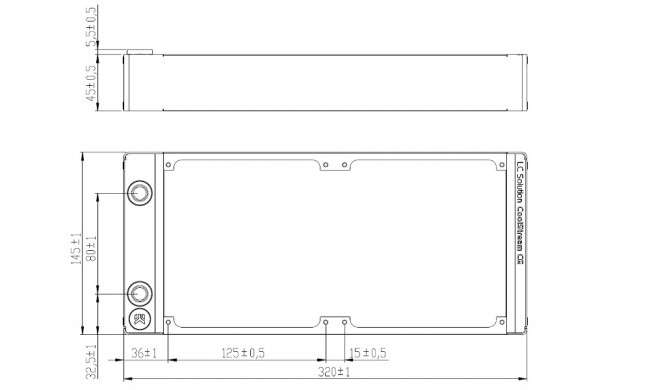
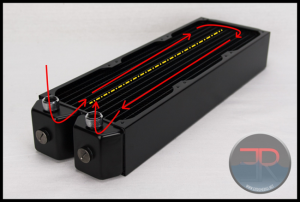
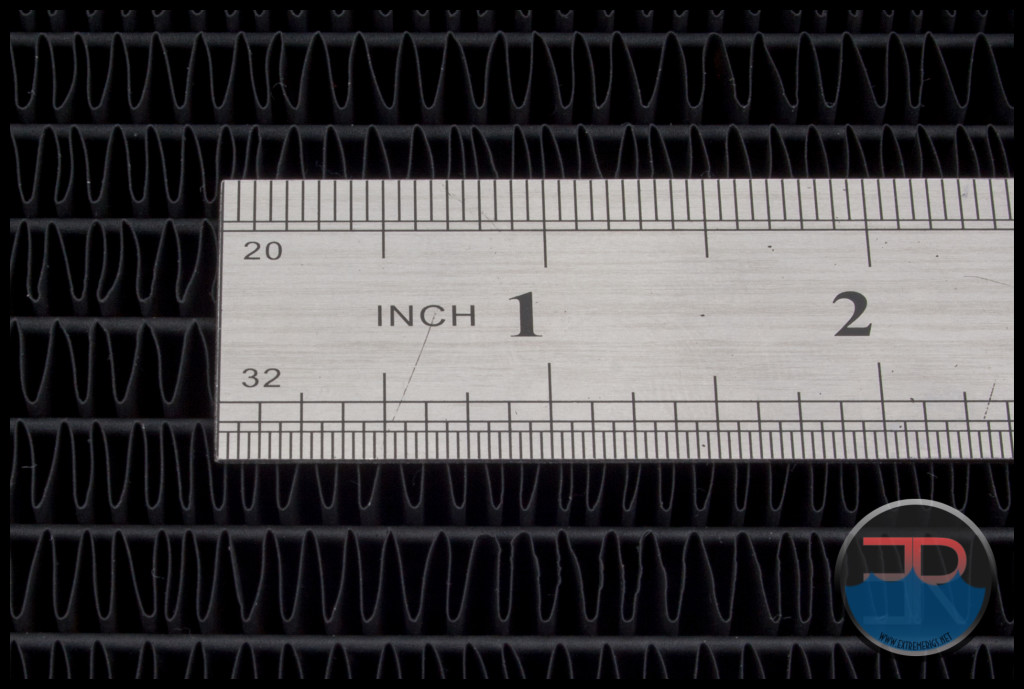
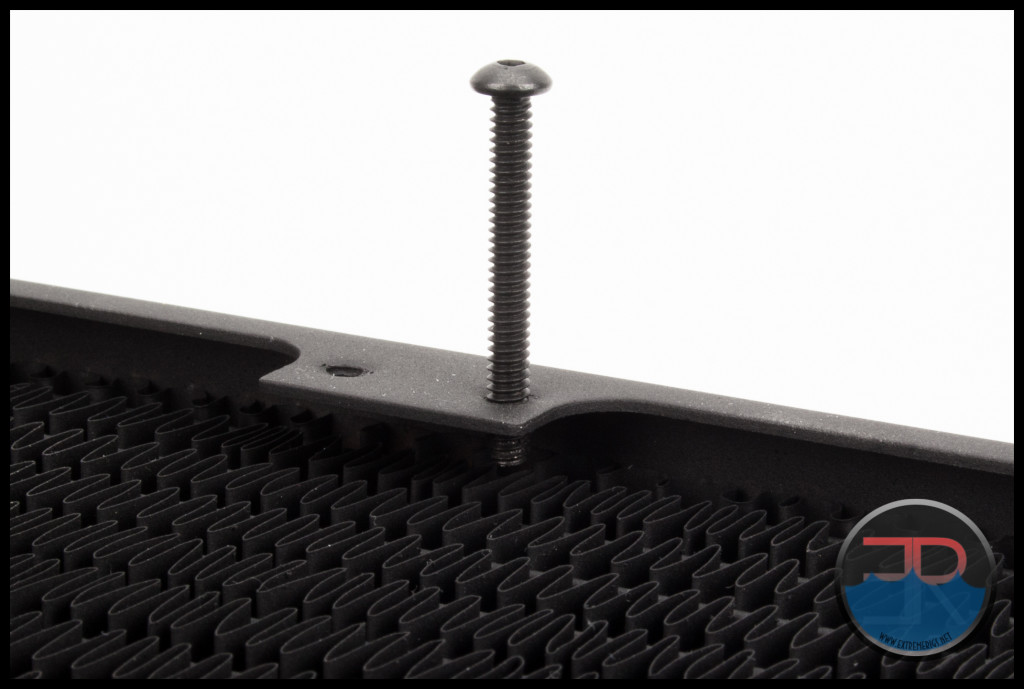
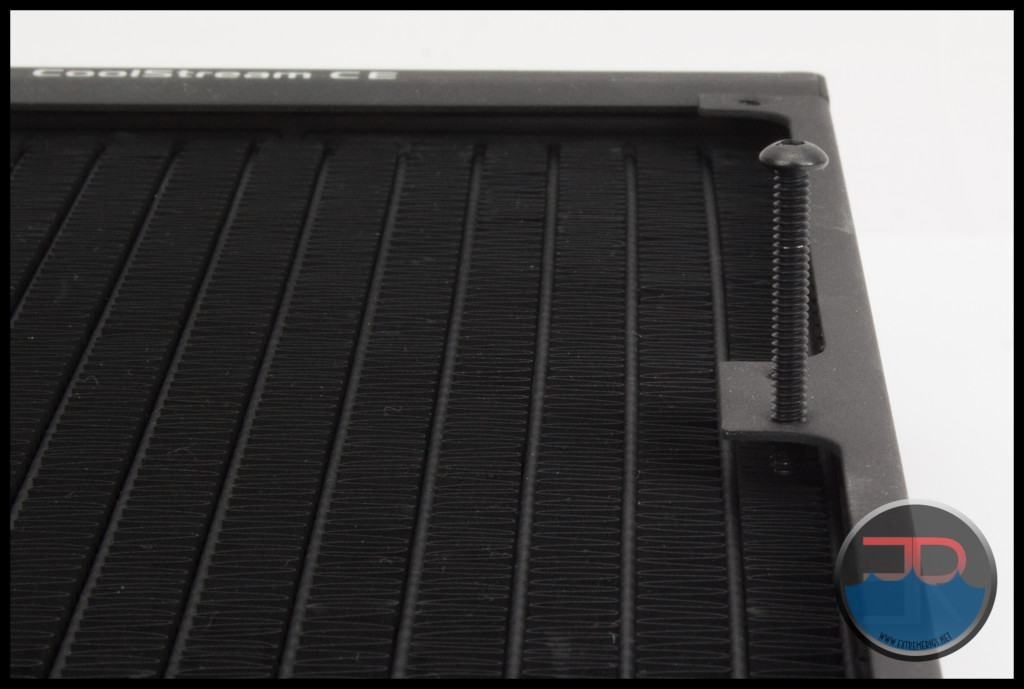
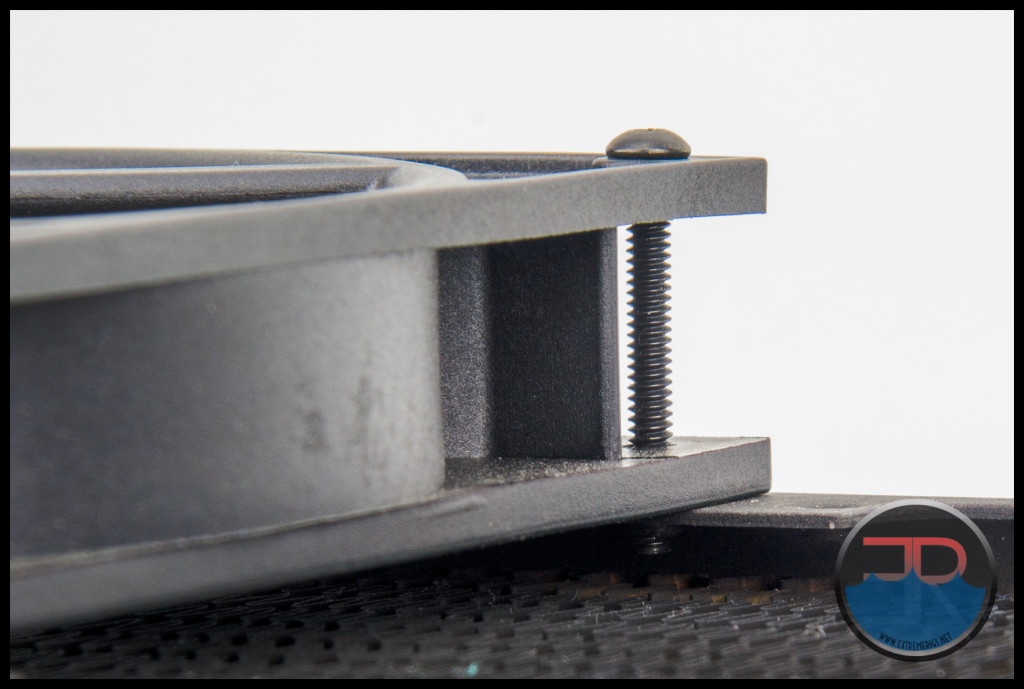
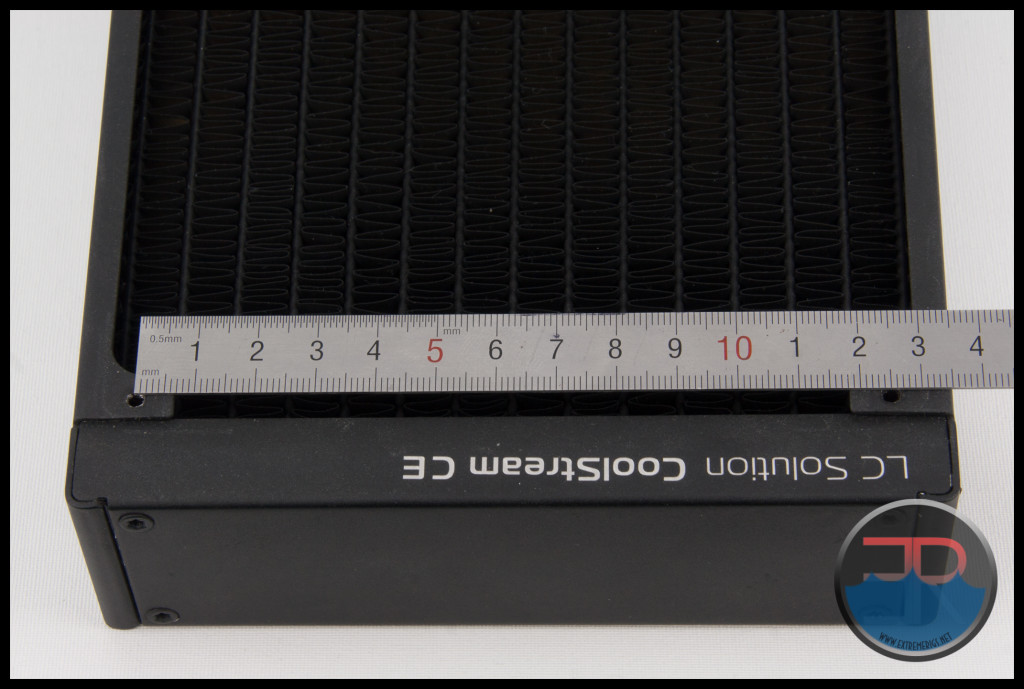
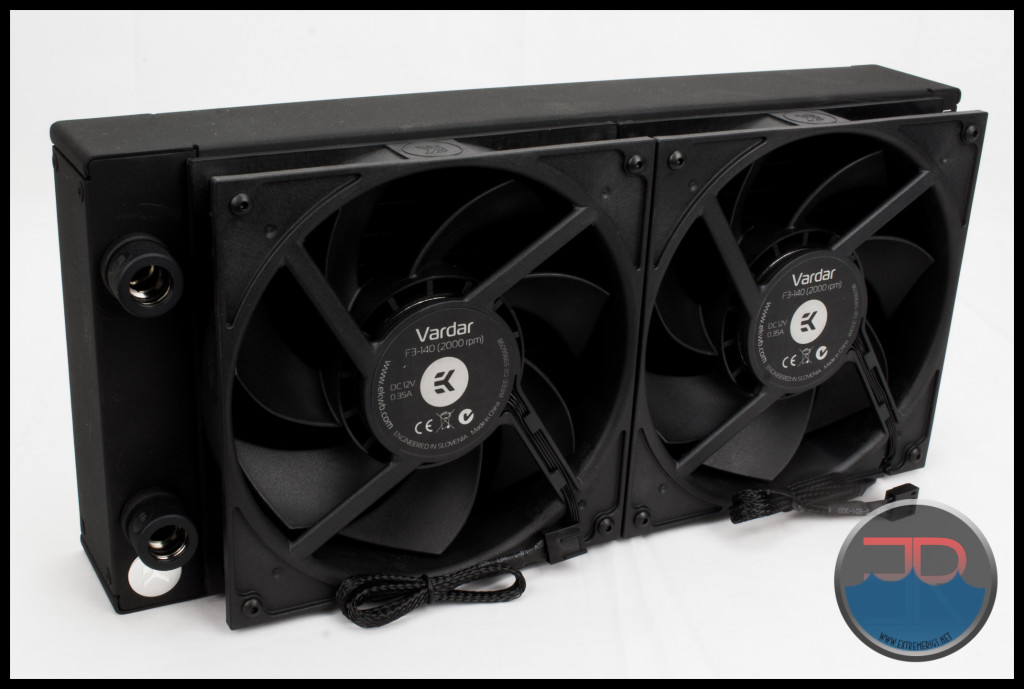
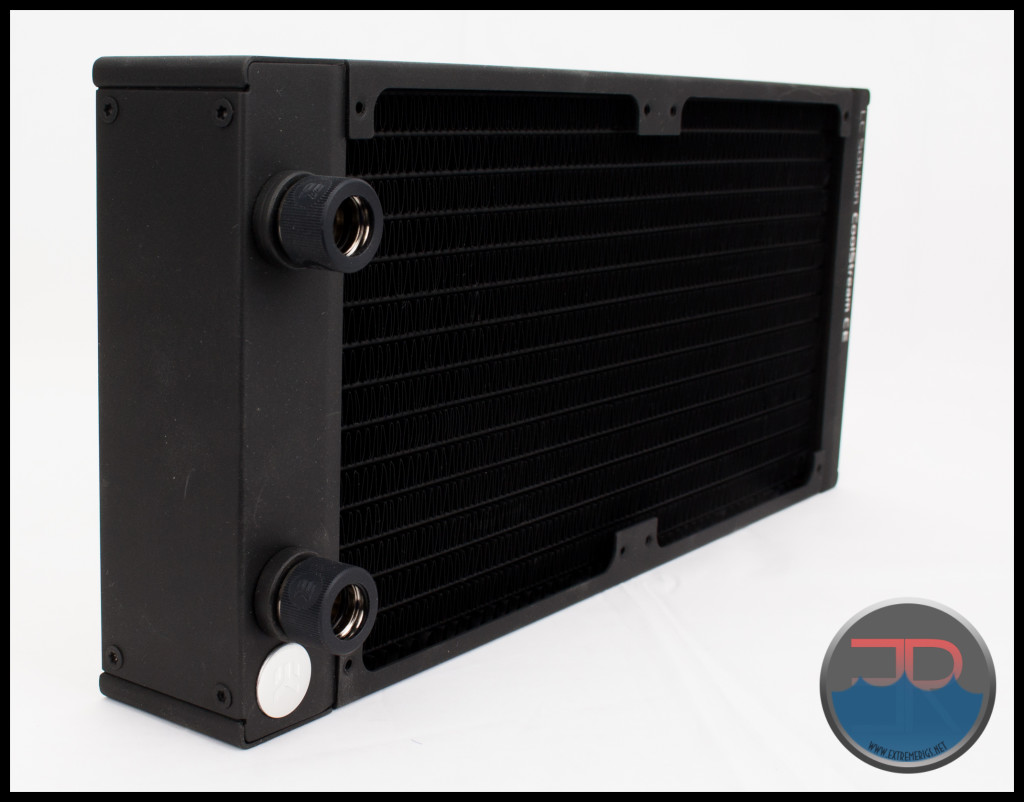
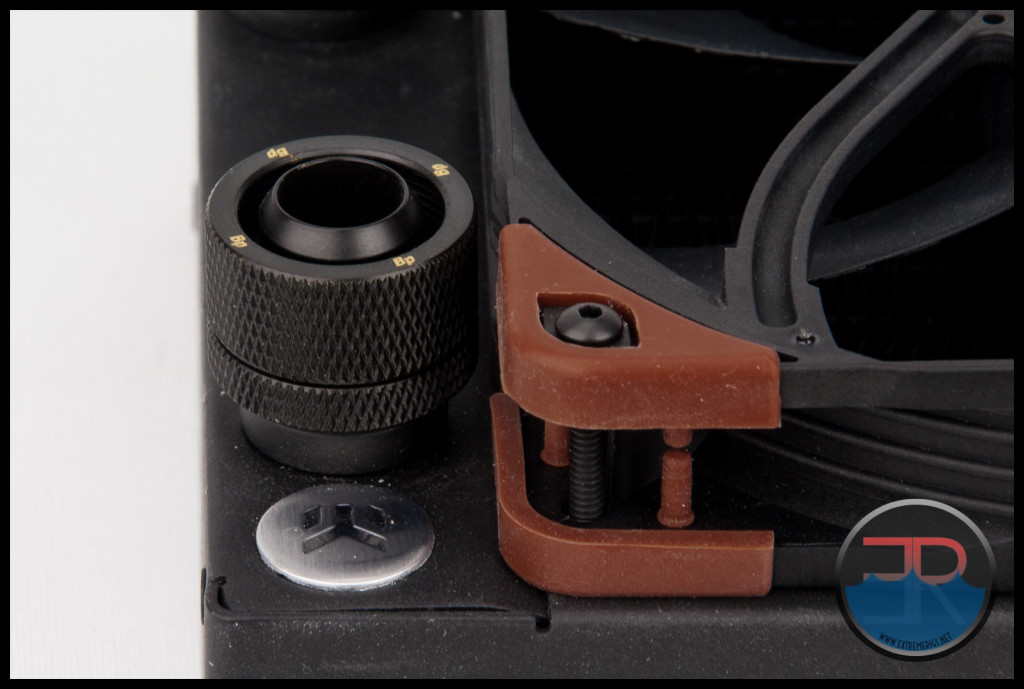




Your dear should specify the results in Celsius, Fahrenheit or Kelvin throughout your test. Because a conversion from Watts to the indicated temperatures is very inaccurate.
There is no formula with which you can convert from Watts in Celsius, Fahrenheit, or Kelvin, therefore your information is not meaningful and belong in a storybook
If you give me even a chemical or physics book shows where the formula is there, you would win the Nobel Prize. Other websites have soagr refuted your moronic calculation.
Thanks Steffen for your well researched and objective comment. All the plots are clearly labelled “Deg C” meaning degrees, celsius. So I’m not sure if you actually read the article or if you’re another keyboard jockey who wants to shit over other’s hard work because you have nothing better to do? As for our “moronic” calculation. Yes actually there is a calculation to generate power dissipation from temperature change within a liquid. If you know your flow rate, as we do, then you can use the specific heat capacity of the volume of water in question (the coolant in question) combined with the temperature change of the water to generate the energy cooled/second. Energy/Time is also know as Power (at least for steady state equilibrium as this is). So yes thank you for the offer but there is no need to award us a nobel prize for such basic physics, but maybe a bit of humble pie for you would be in order? Maybe even cite your sources next time as to why our calculation is so “moronic”?
Well, I found your reviews VERY helpful; in fact, I’m basing my purchase from info in your reviews…I need a dual fan (push only) radiator that’s 50 mm thin or thinner, that’s readily available (price don’t too much matter)…based on your reviews, and the needs listed above, I have decided on this EK Coolstream 280 CE (with the Alphacool XT45 coming in a close 2nd). I don’t have fans for it yet, because that’s depending on the rad being purchased (this rad is just being used as a secondary rad to the main Aquacomputer 480 rad I have).
Comments are closed.